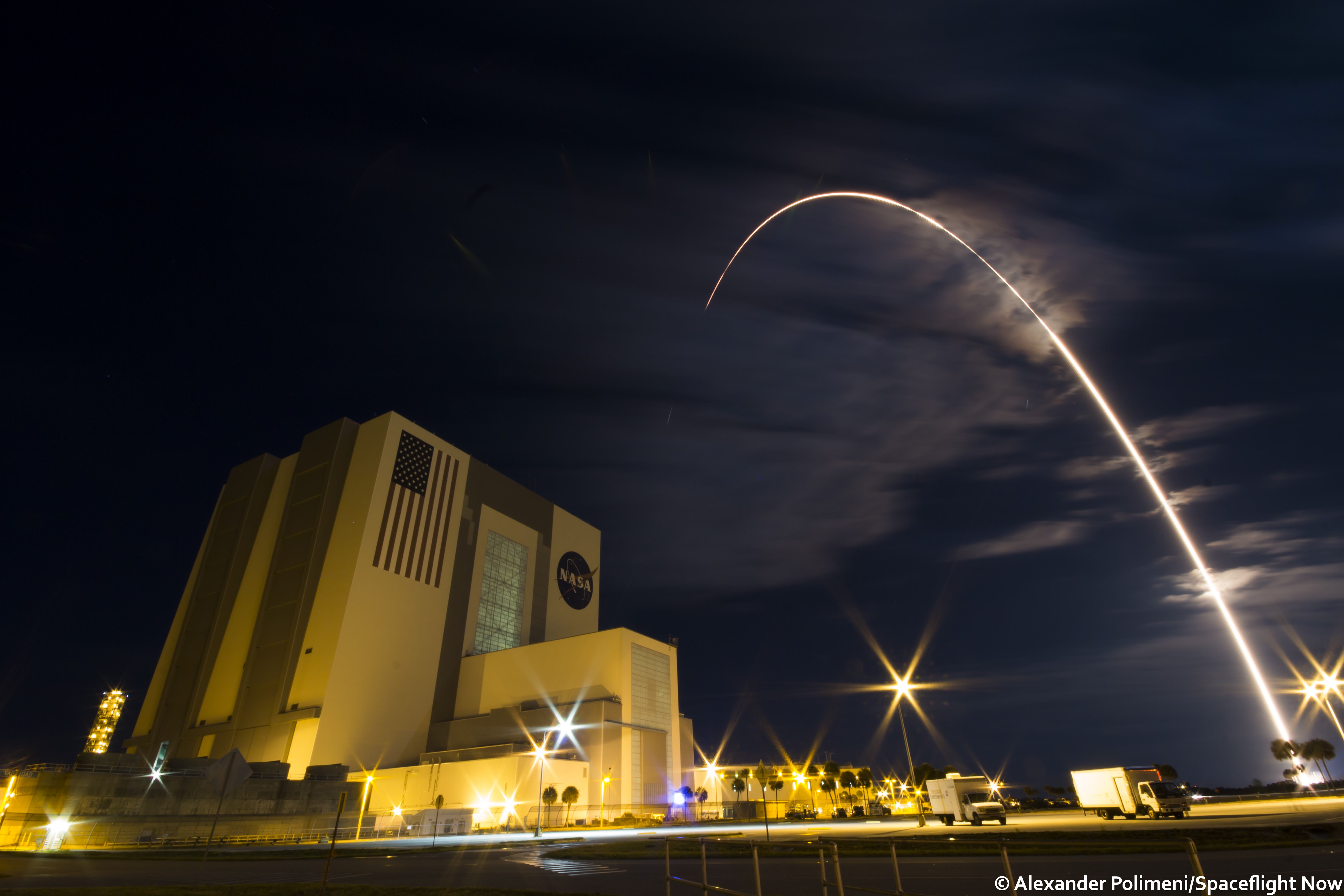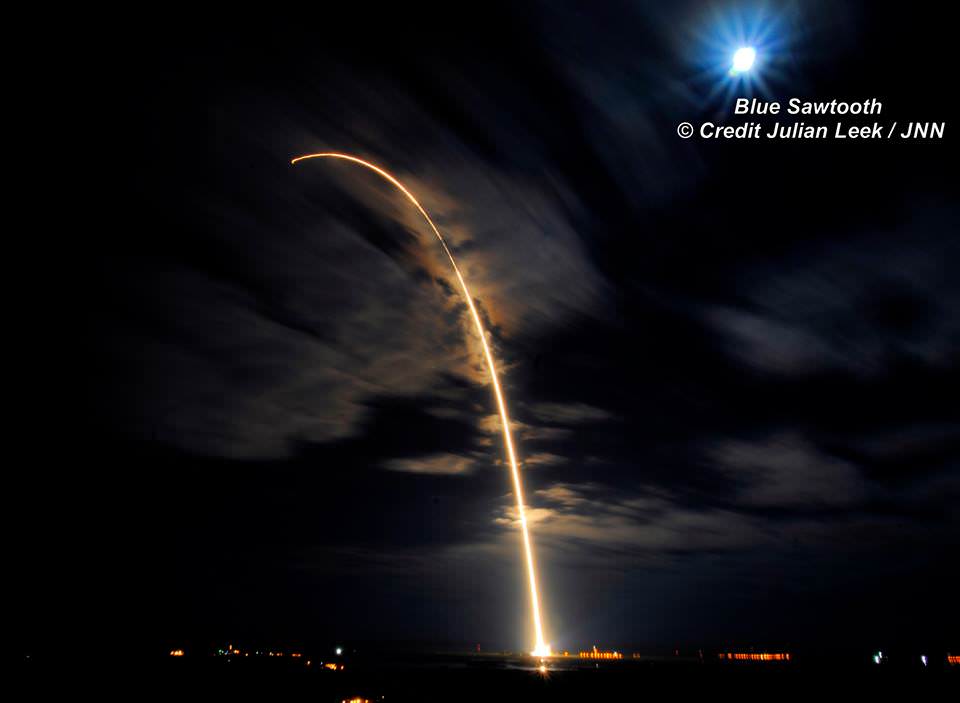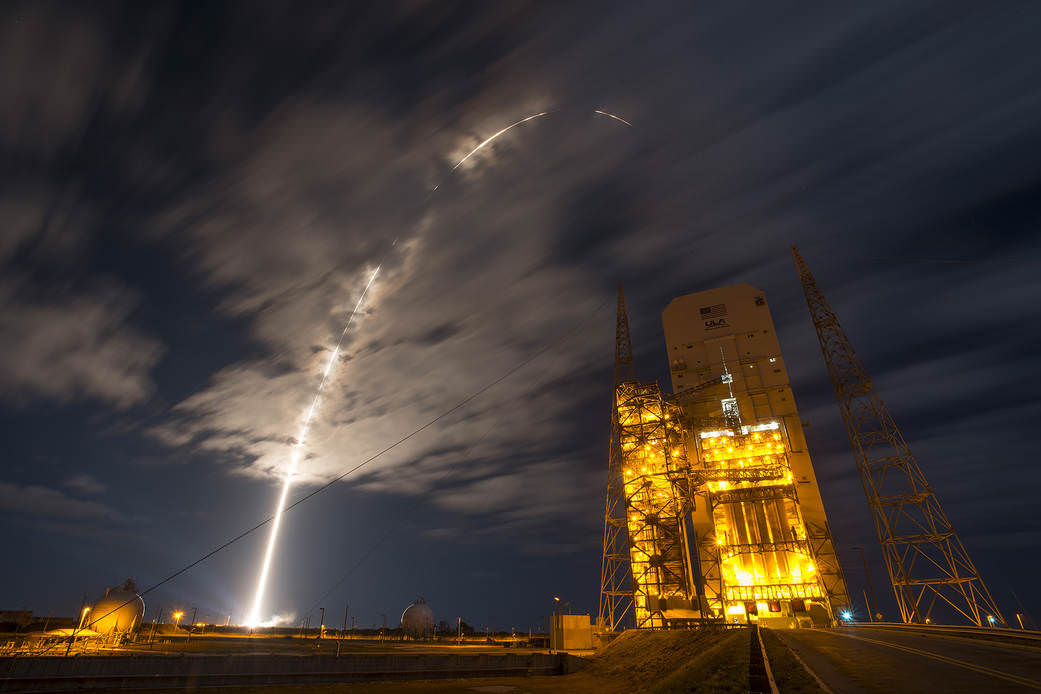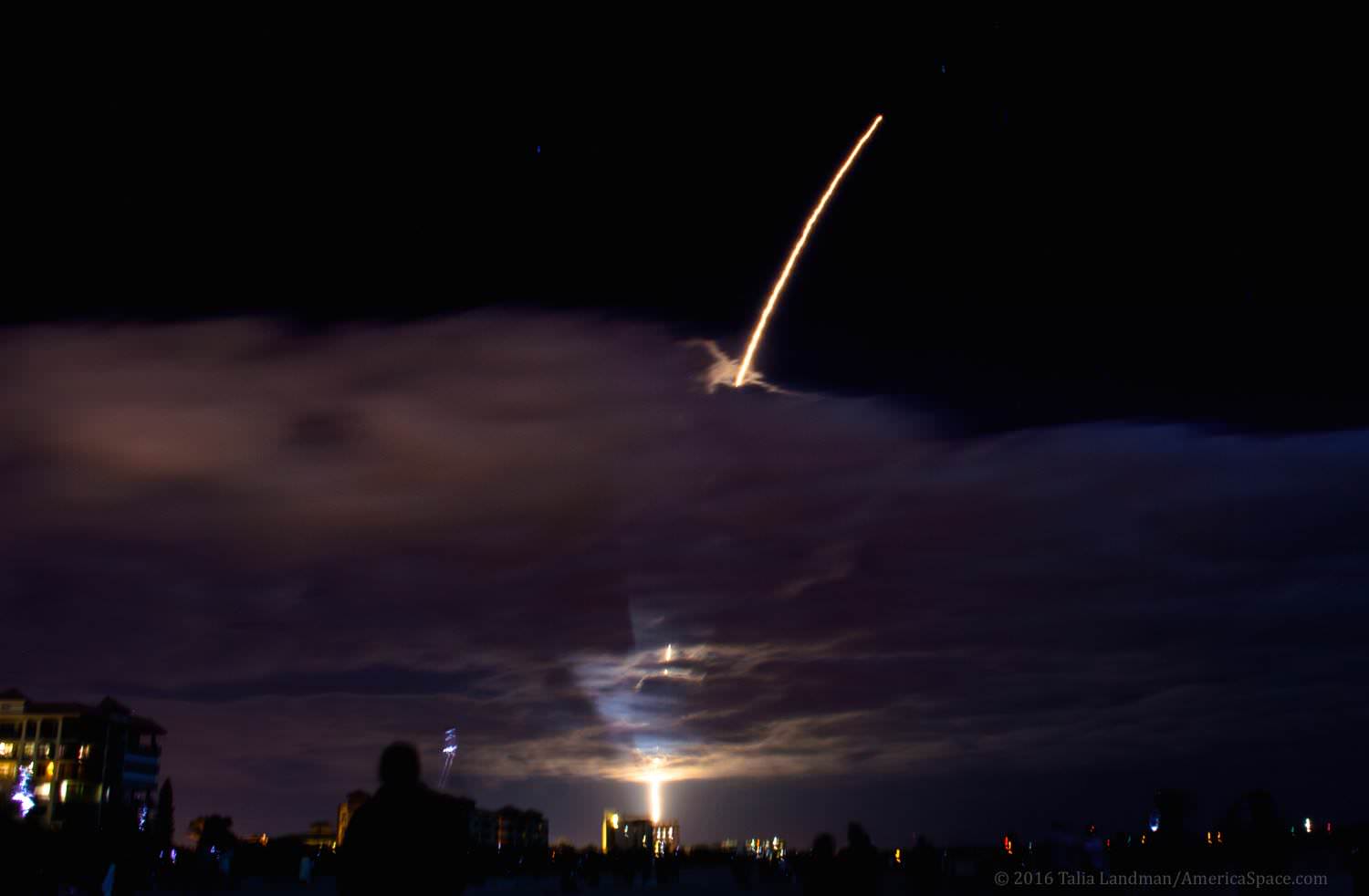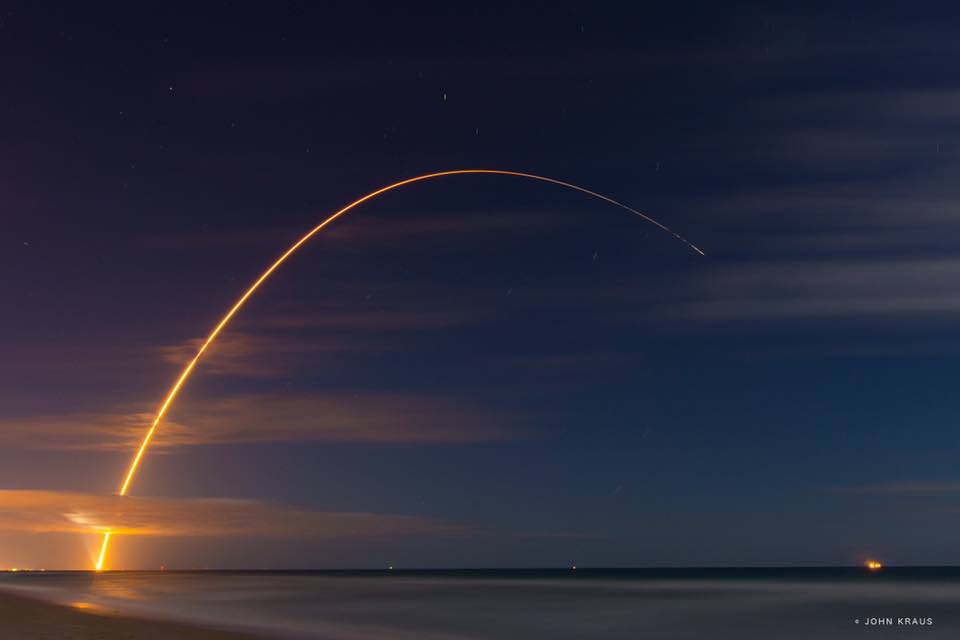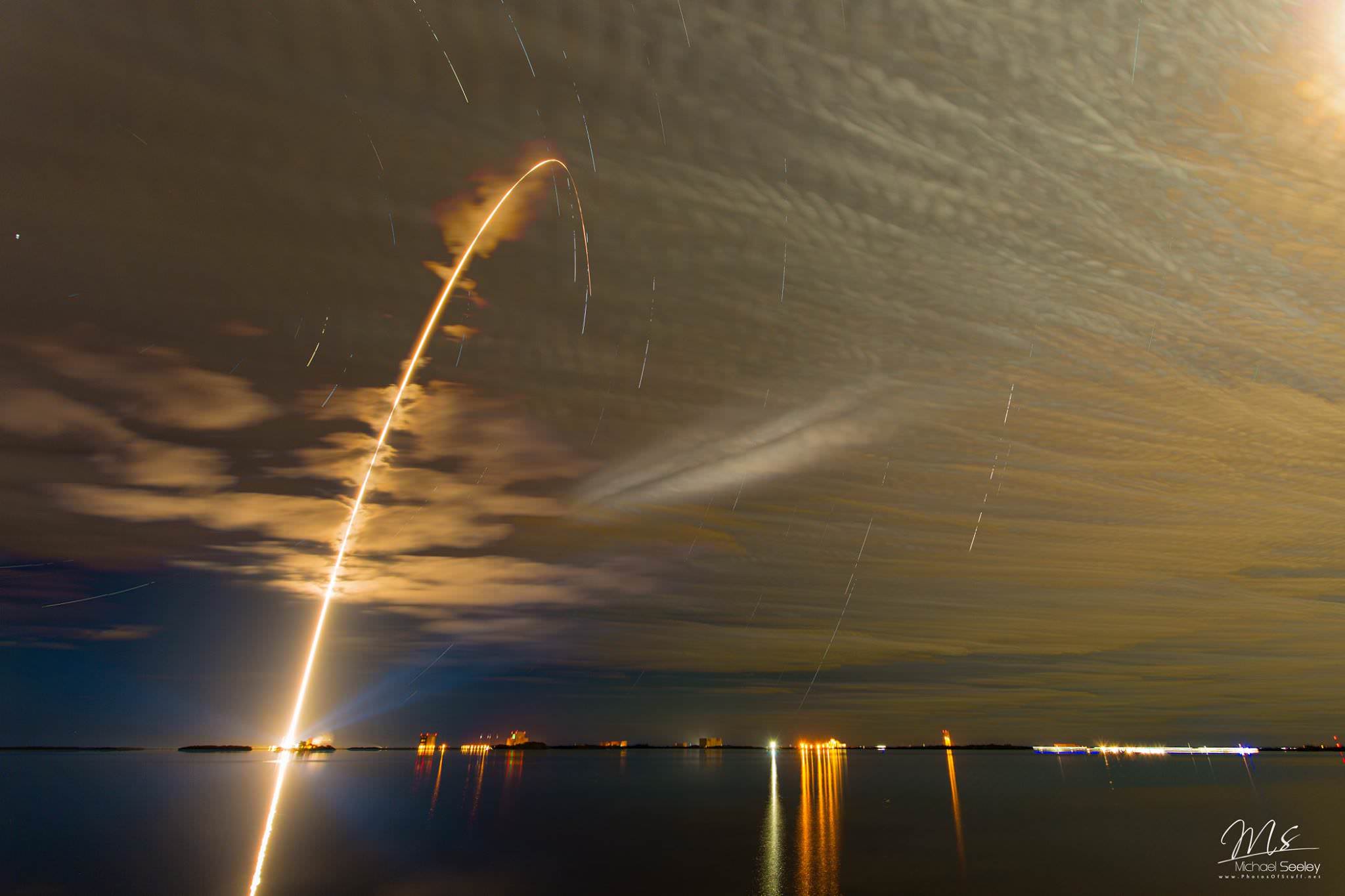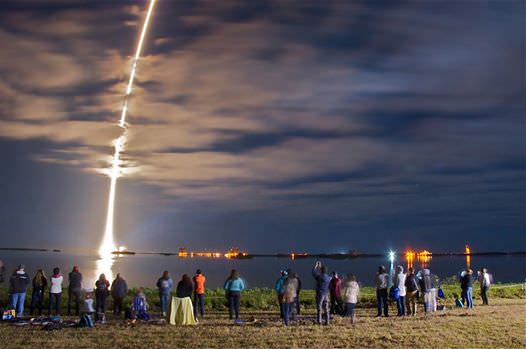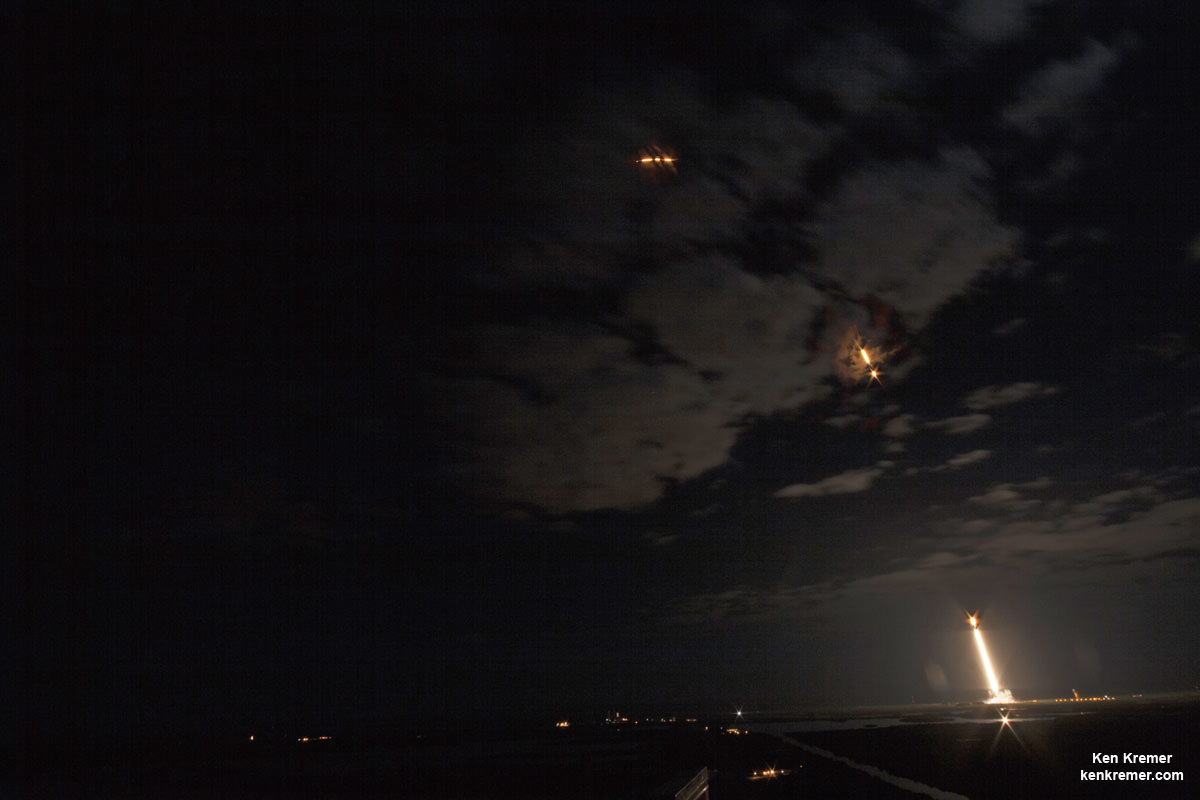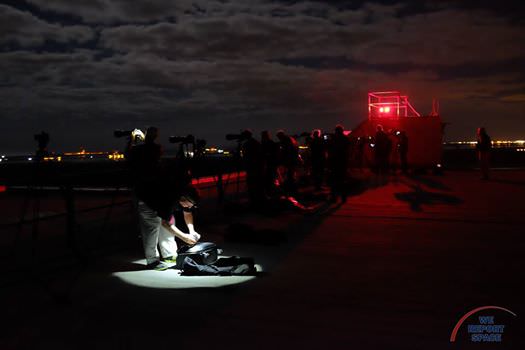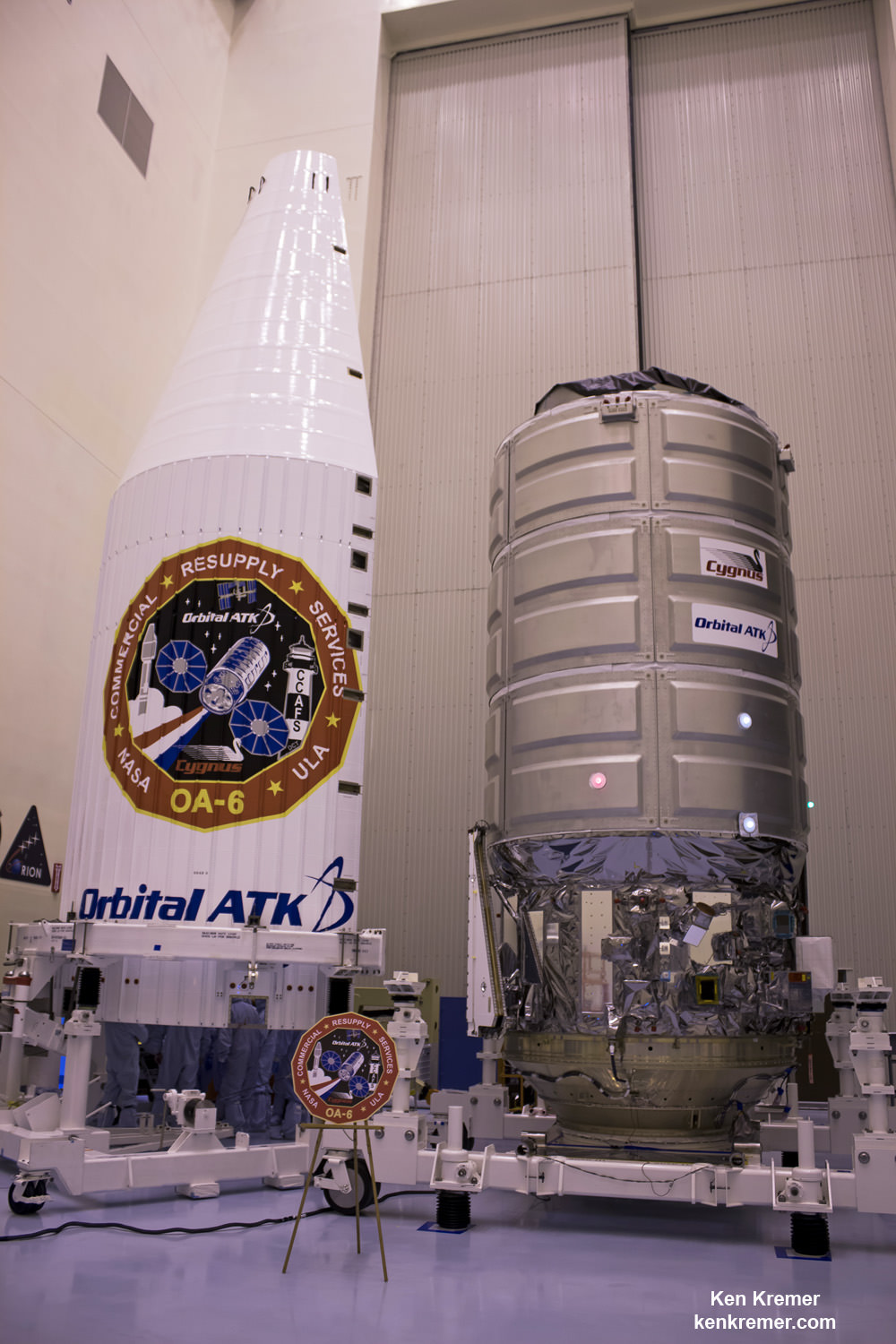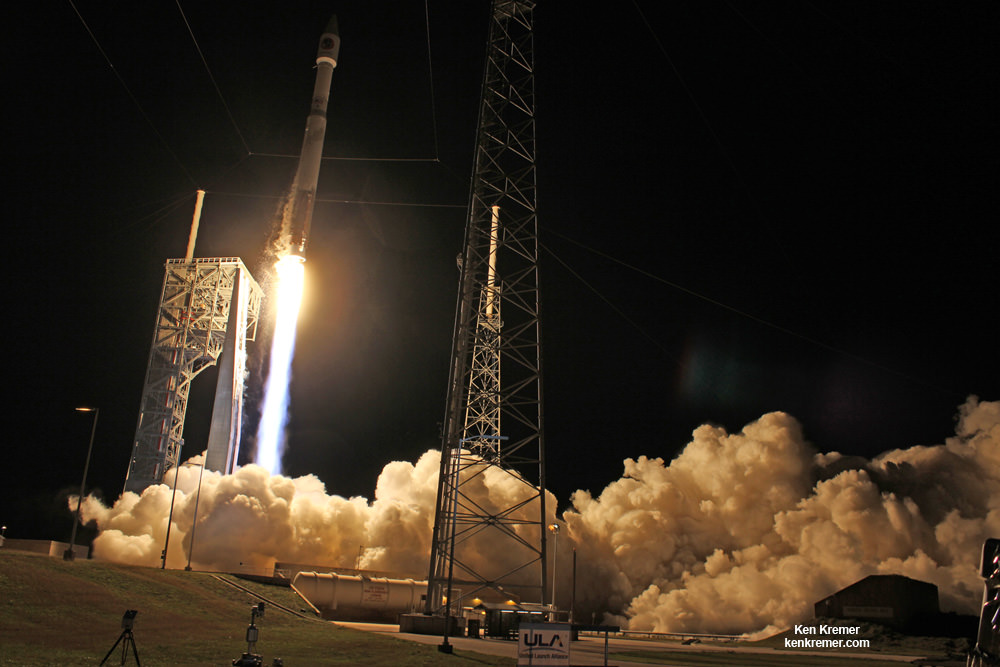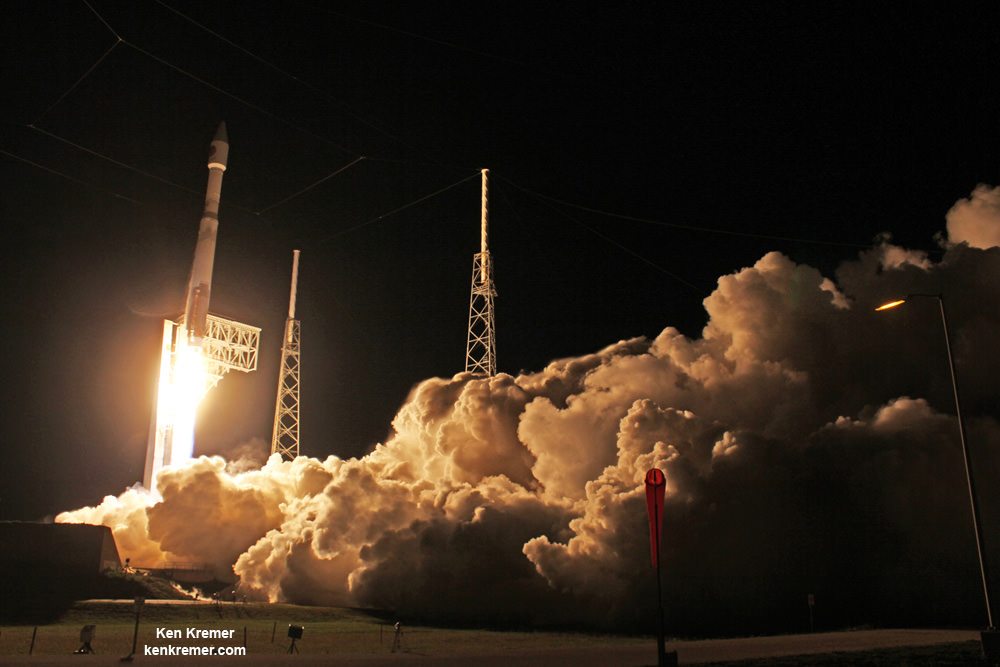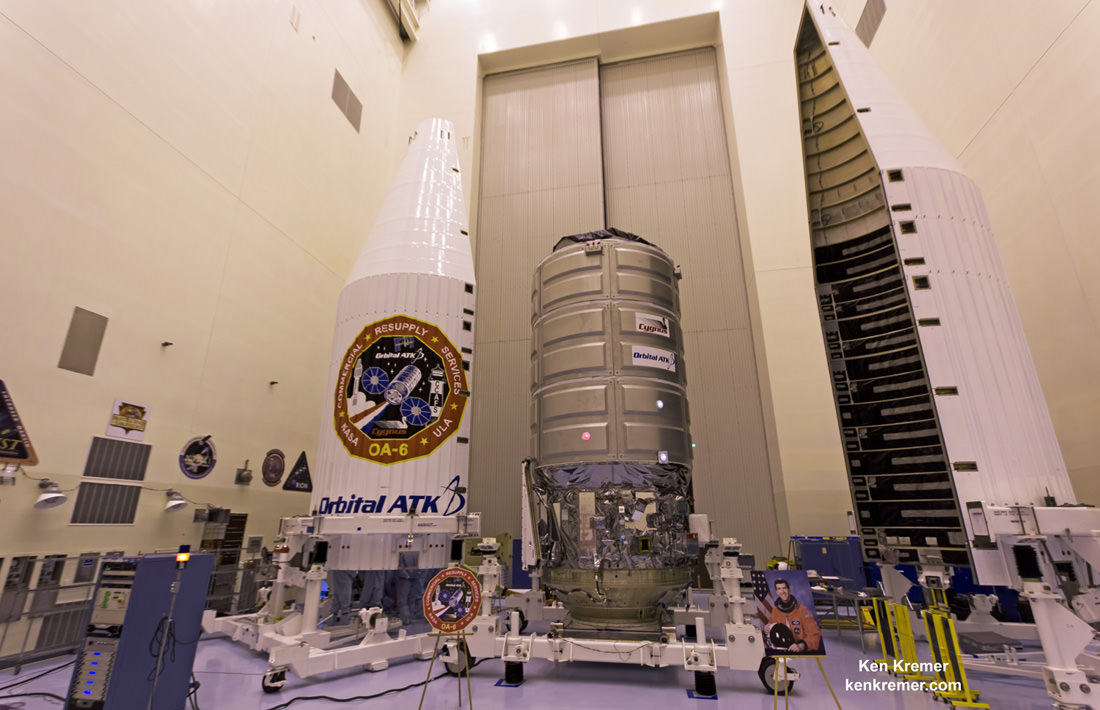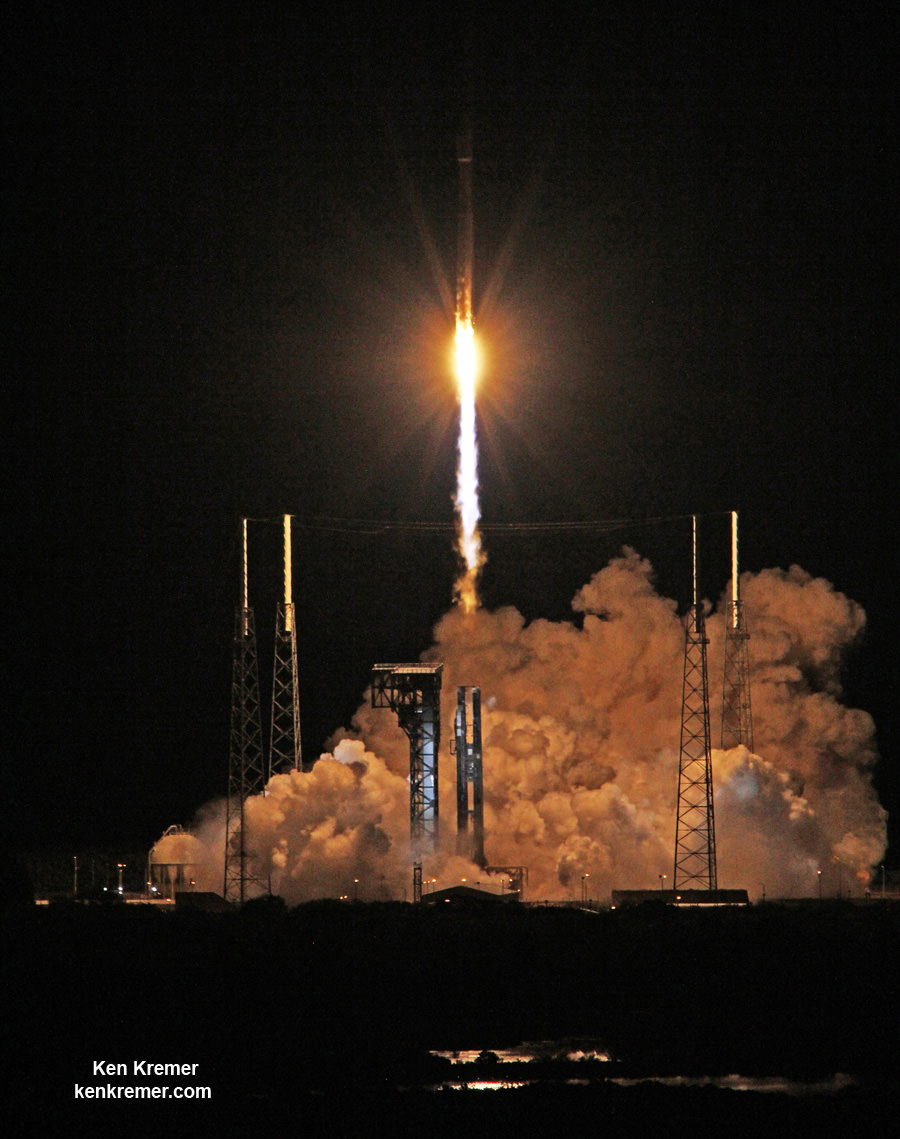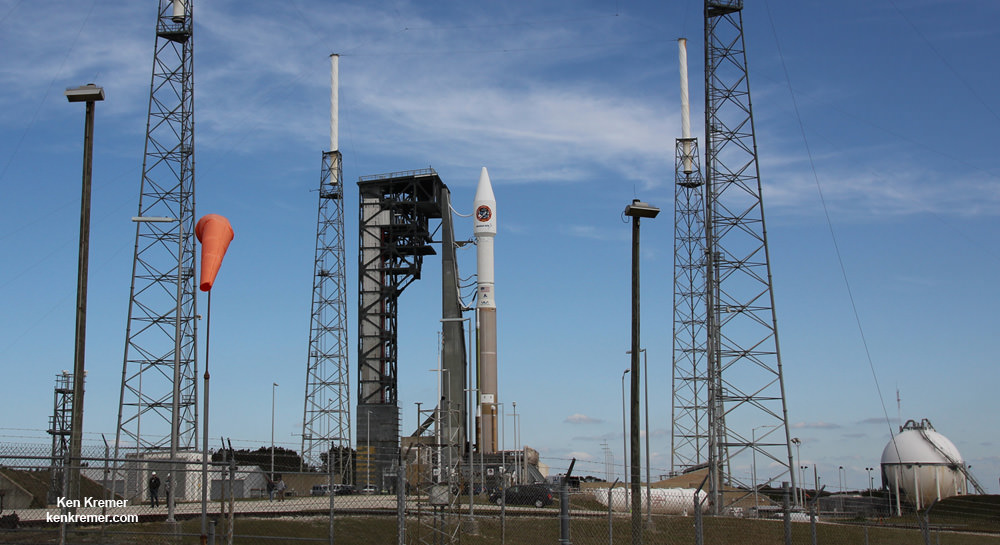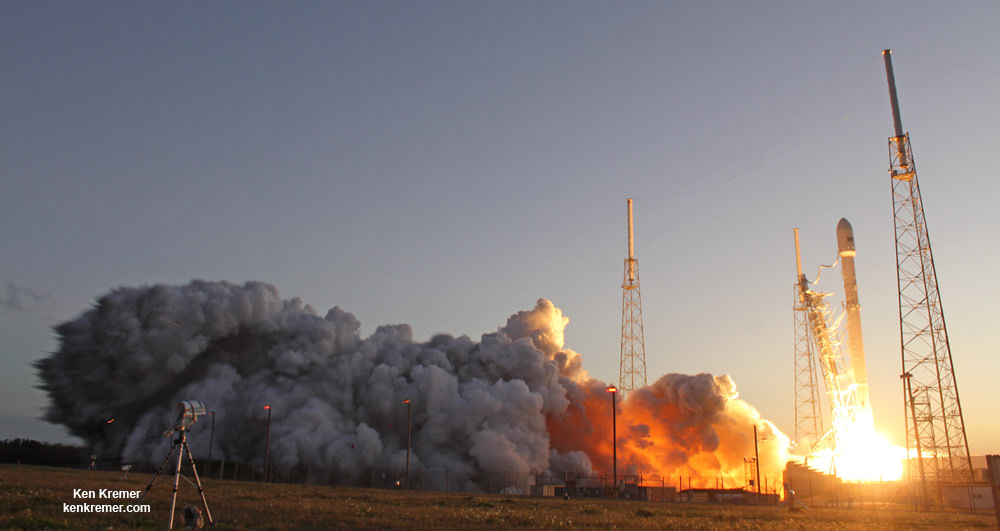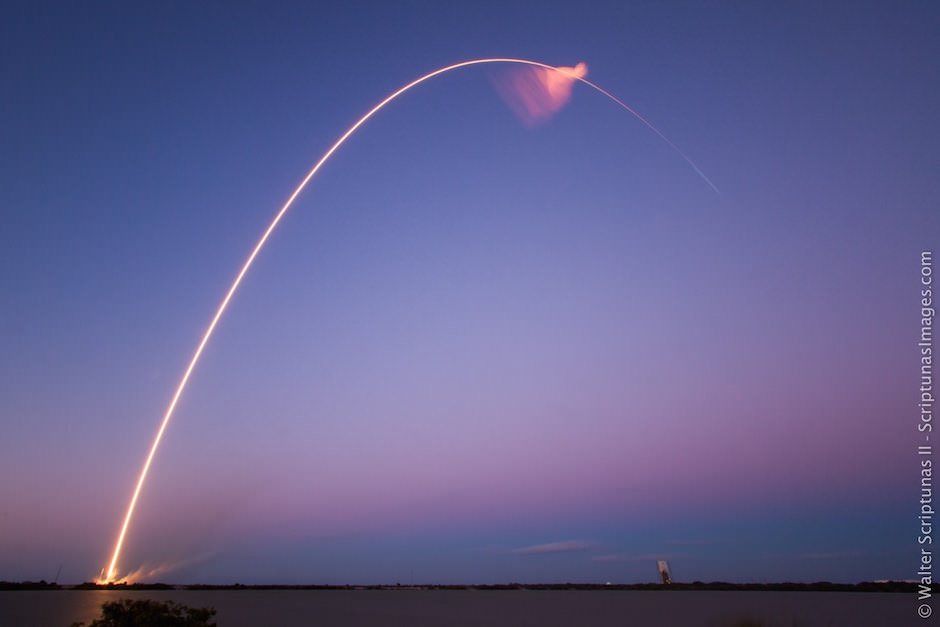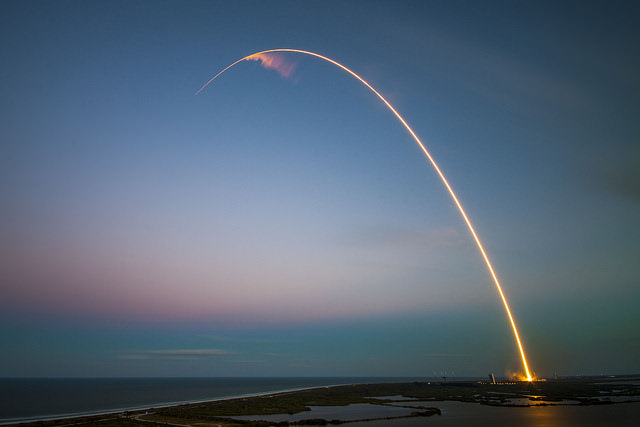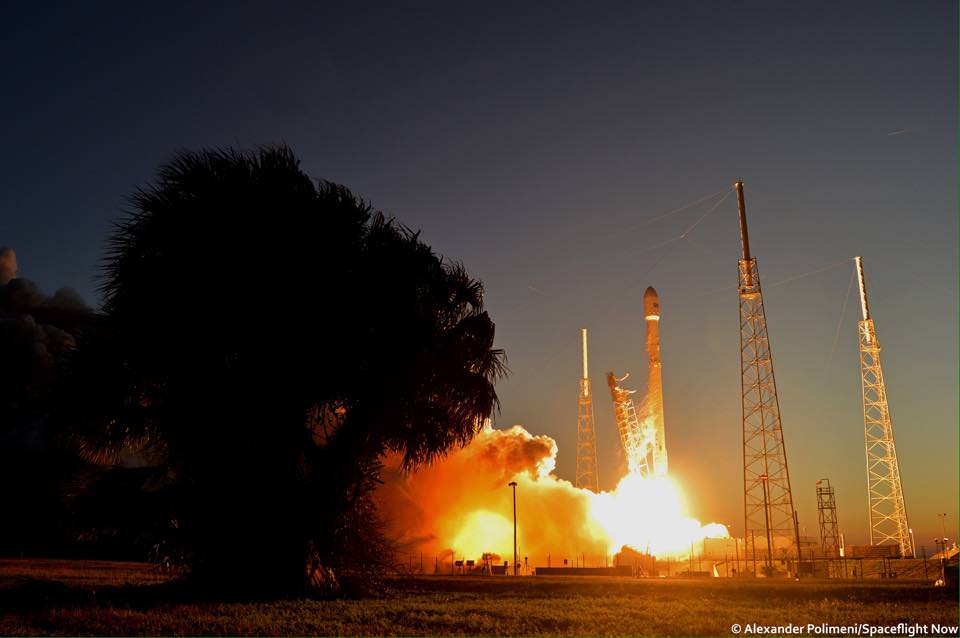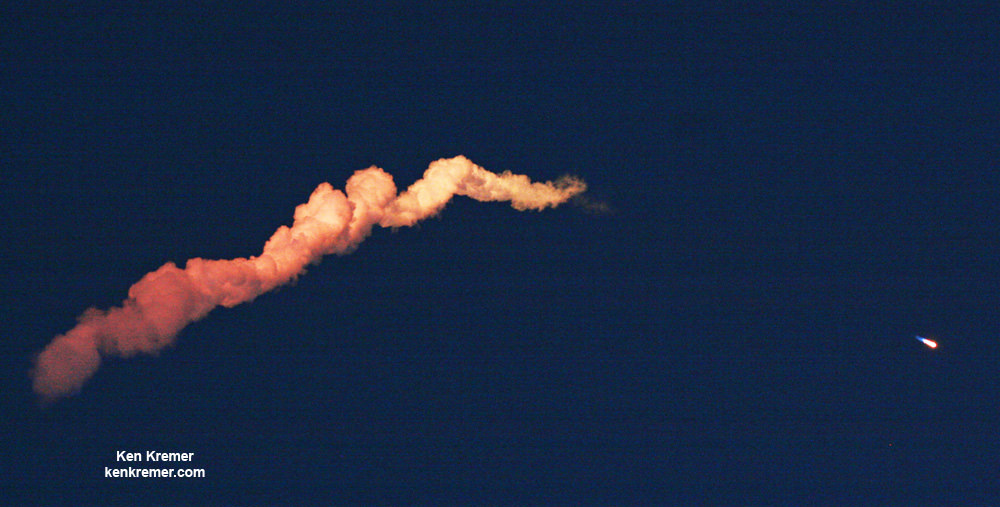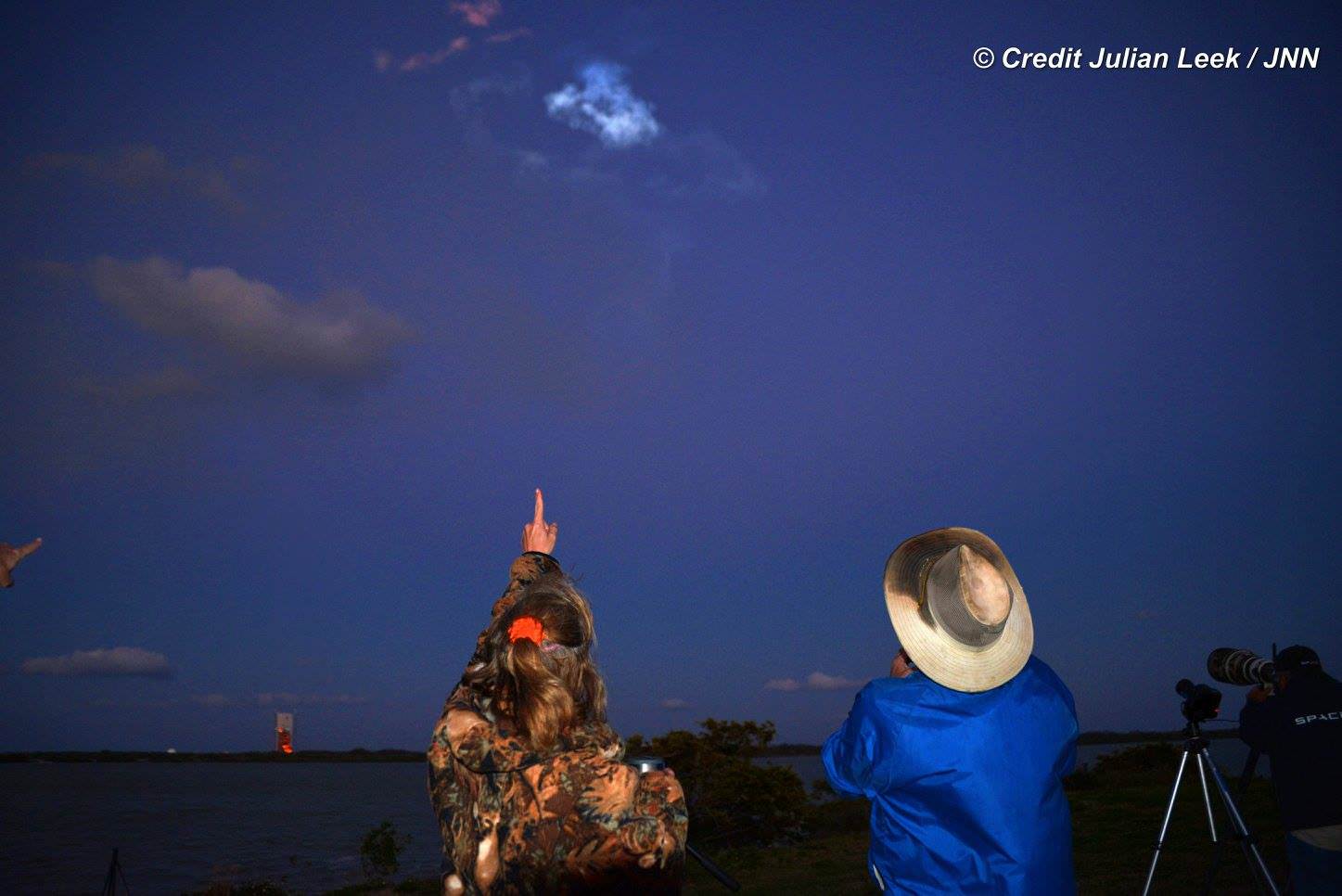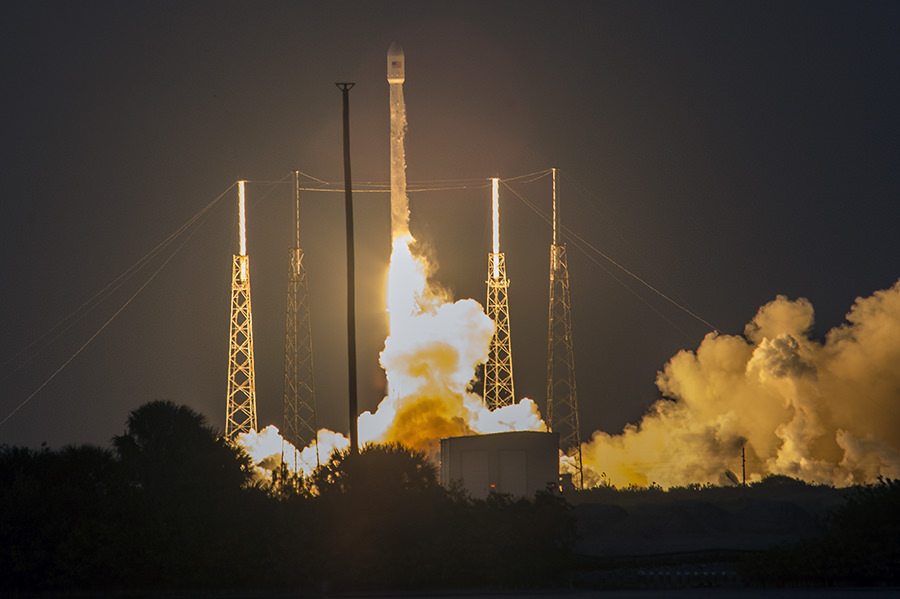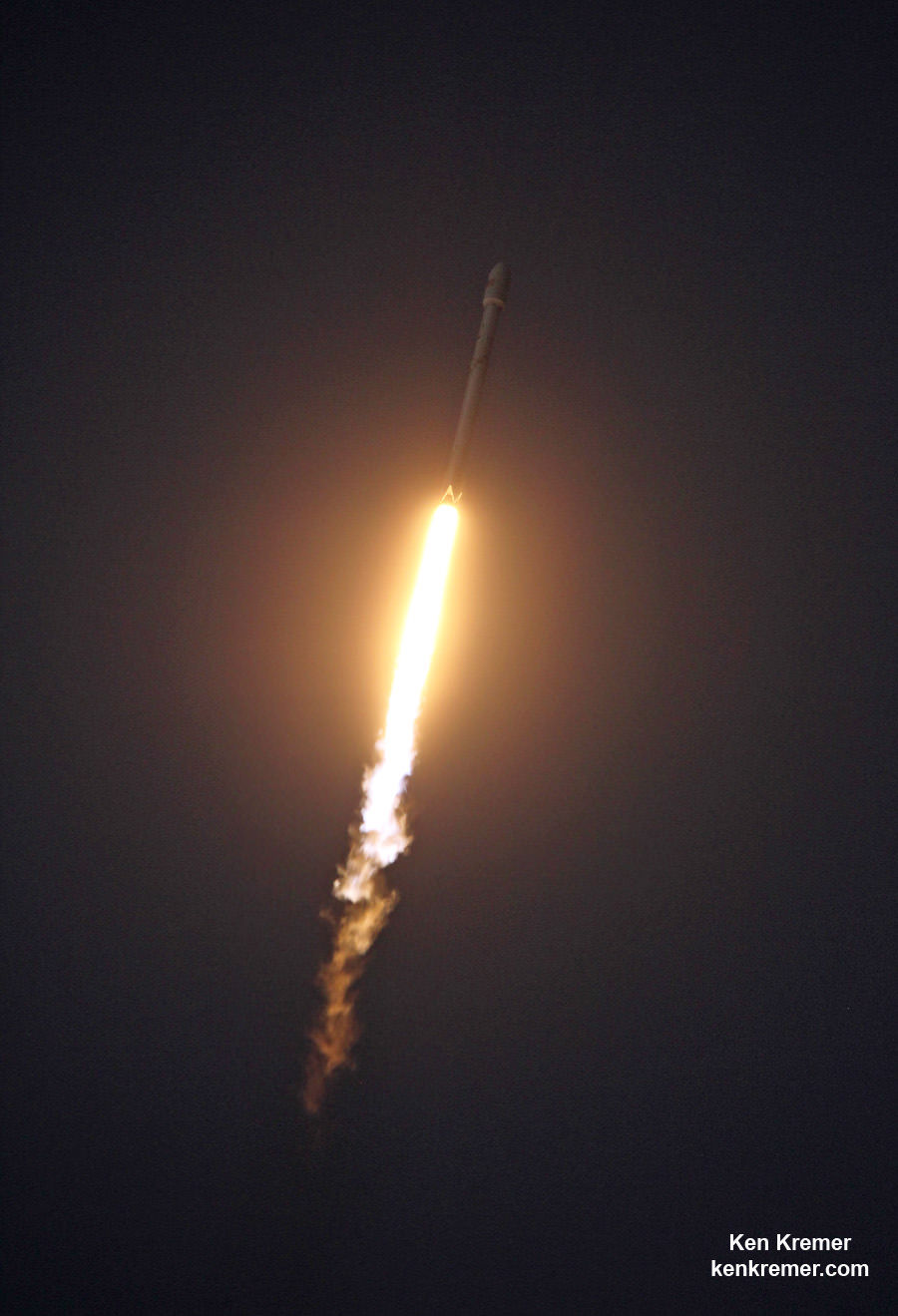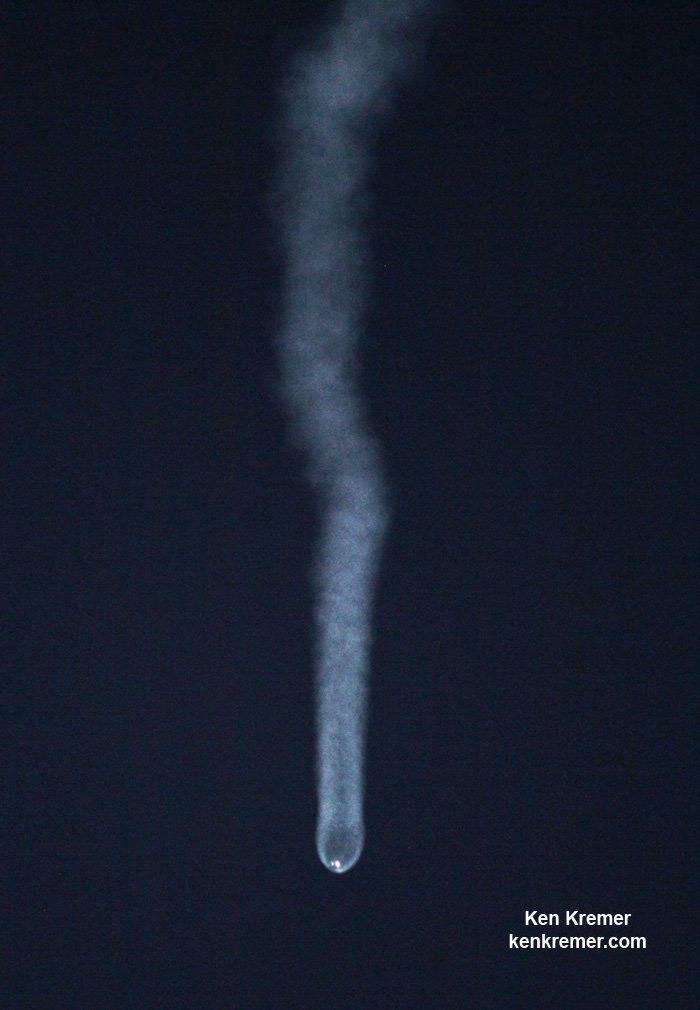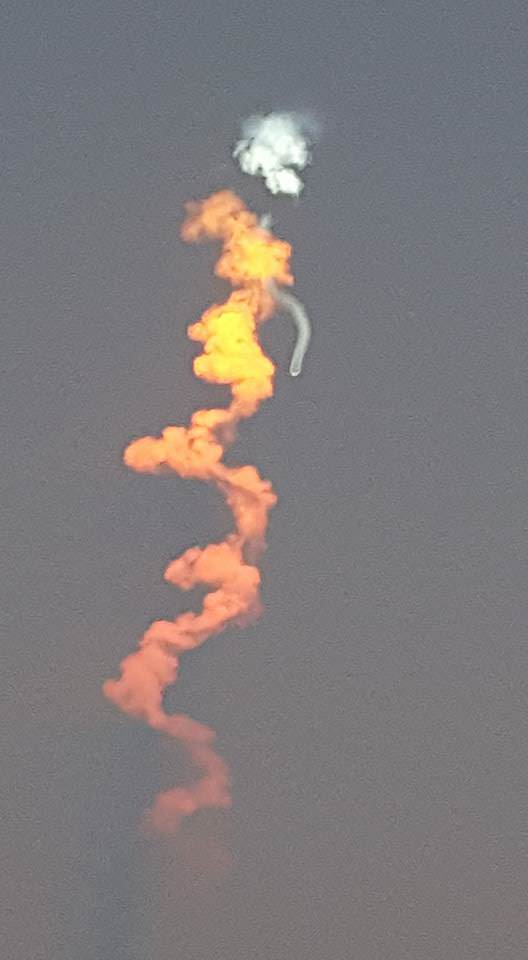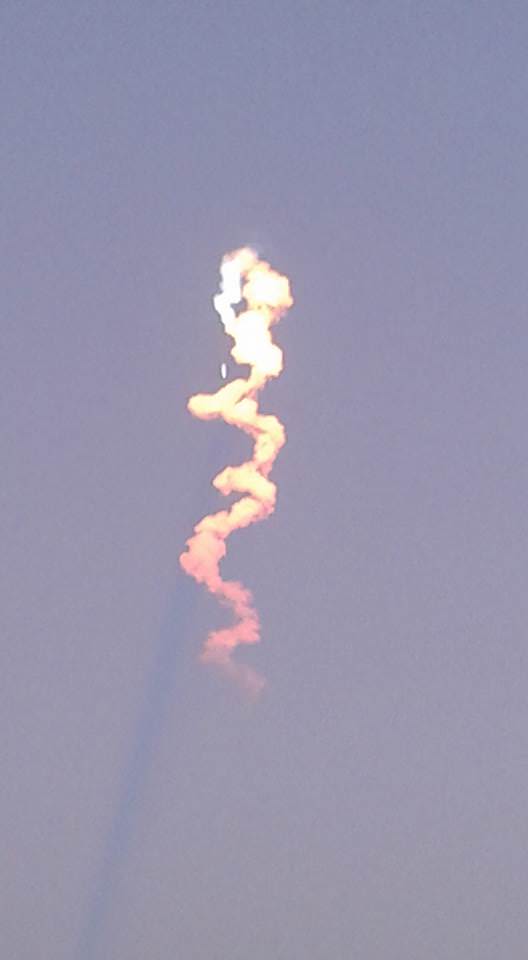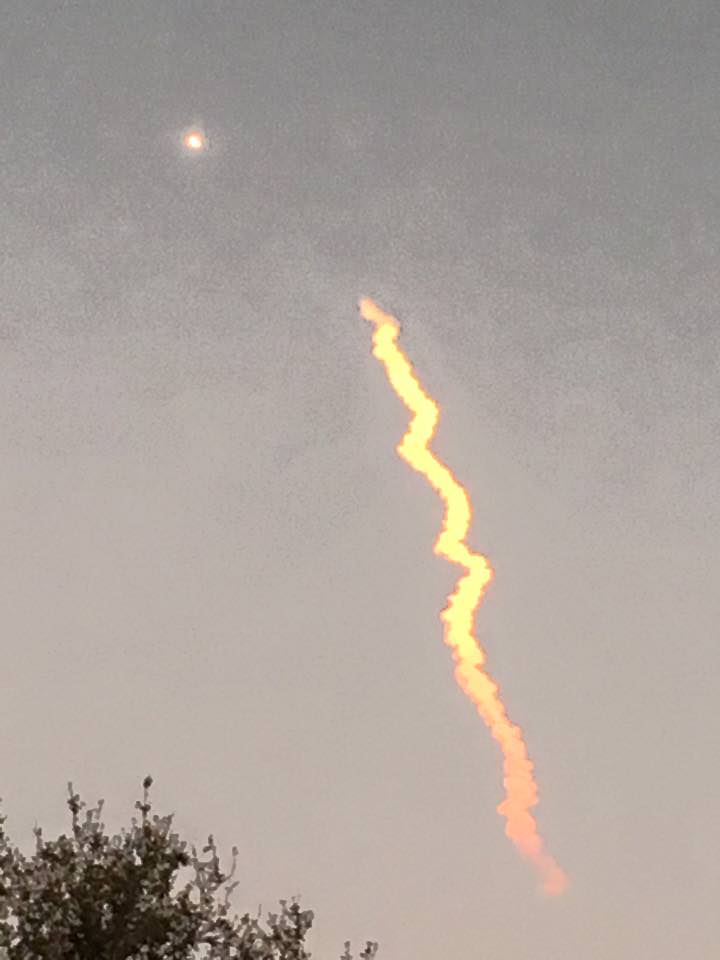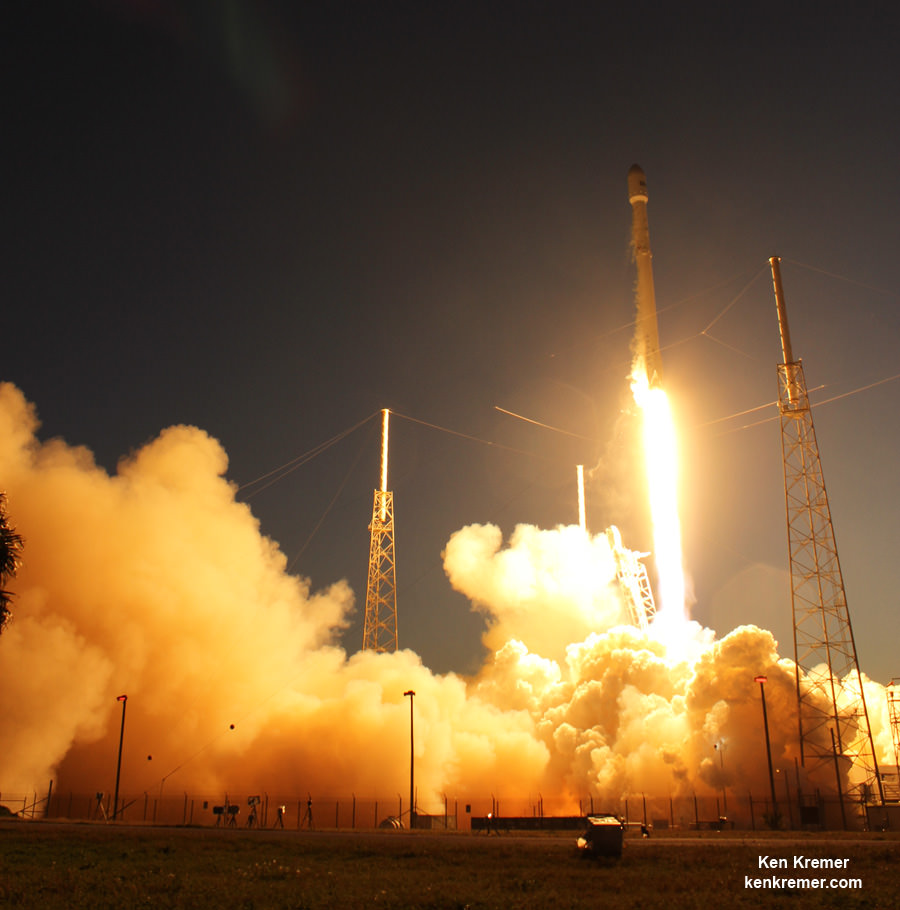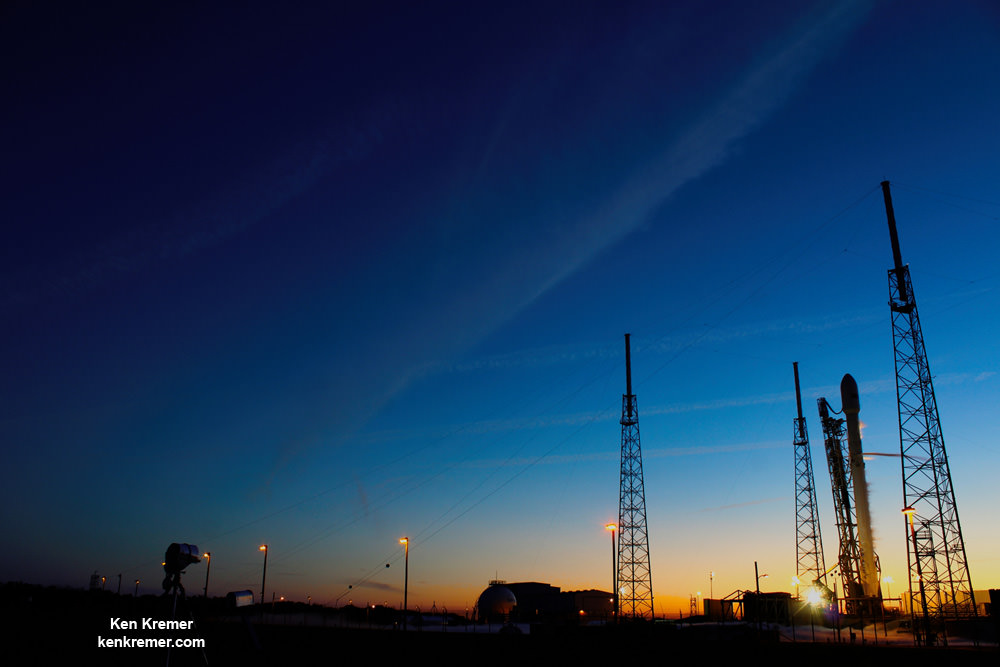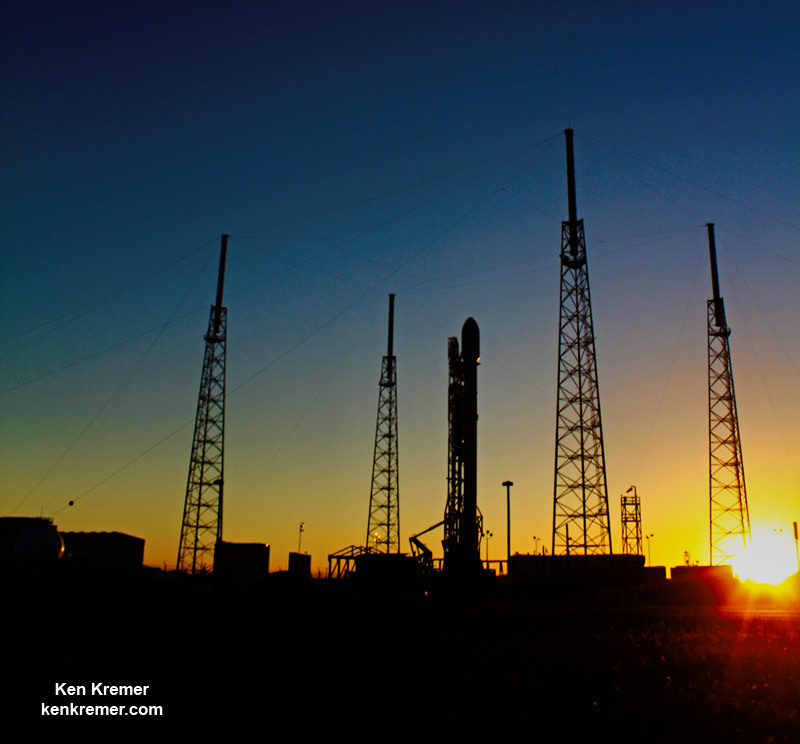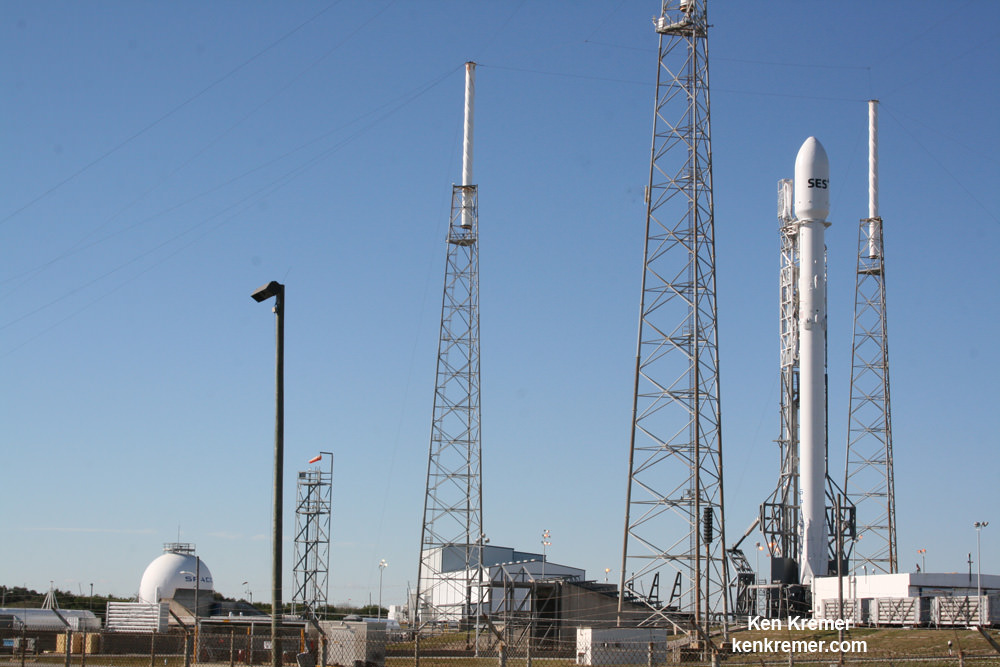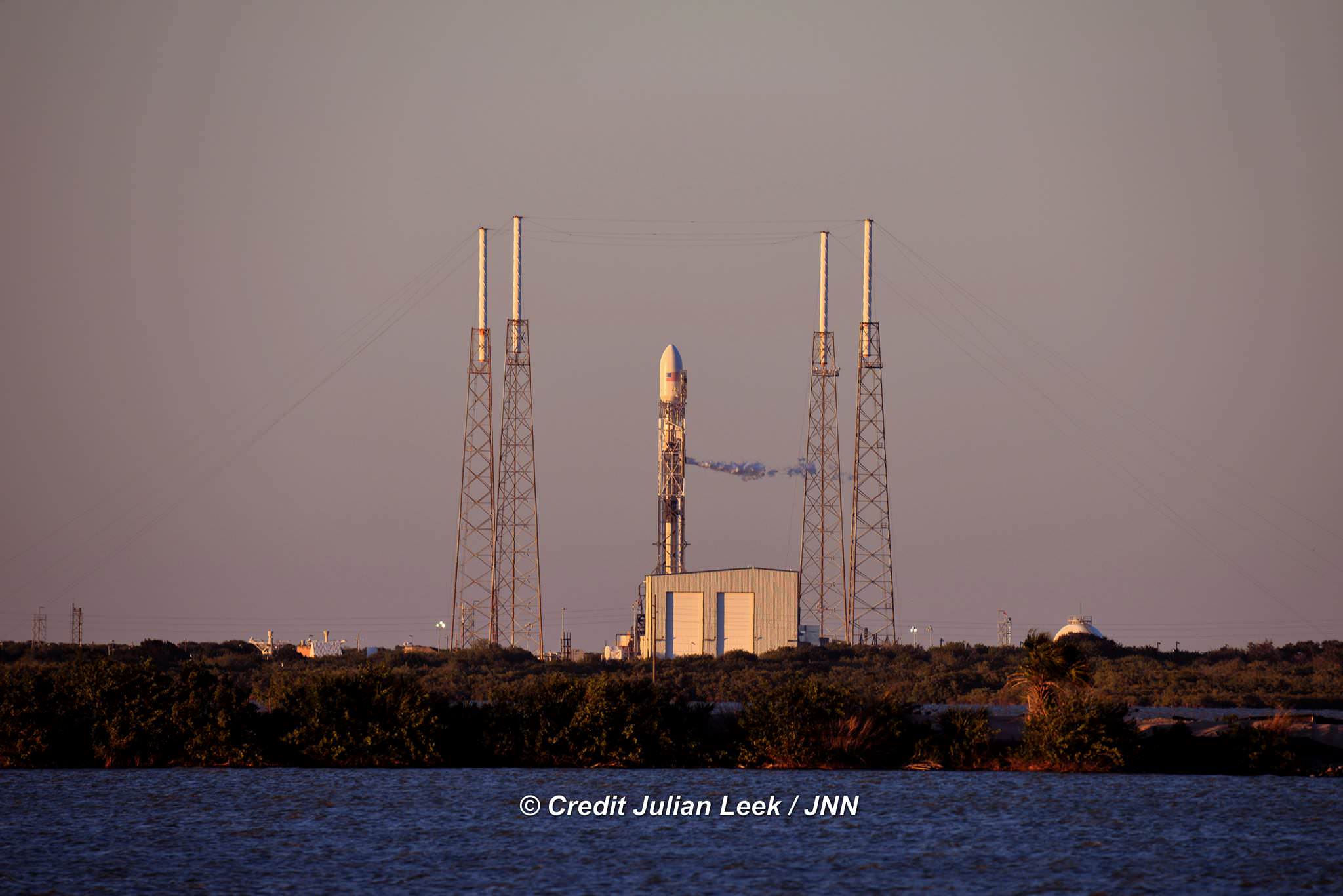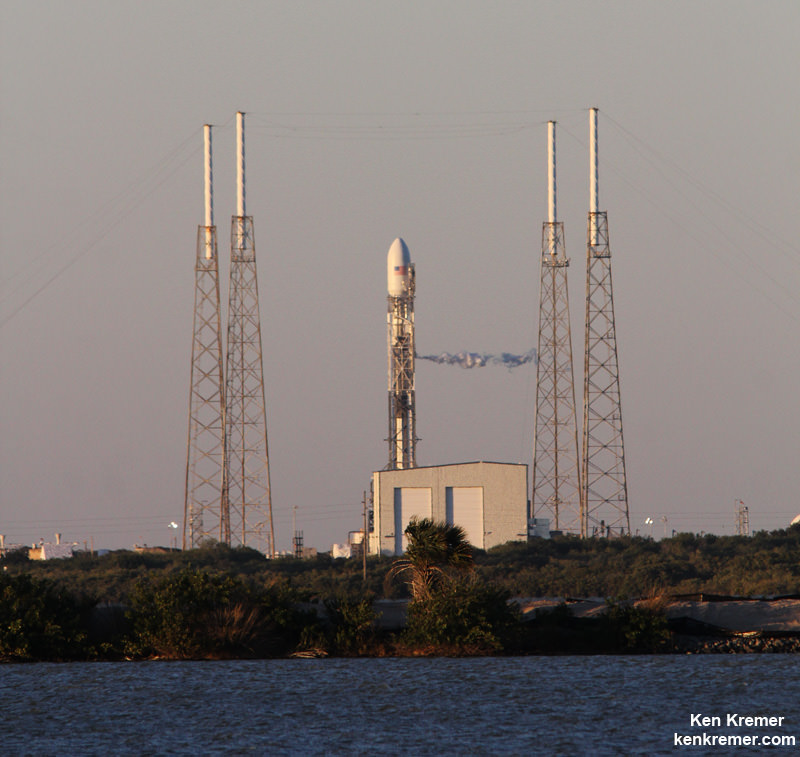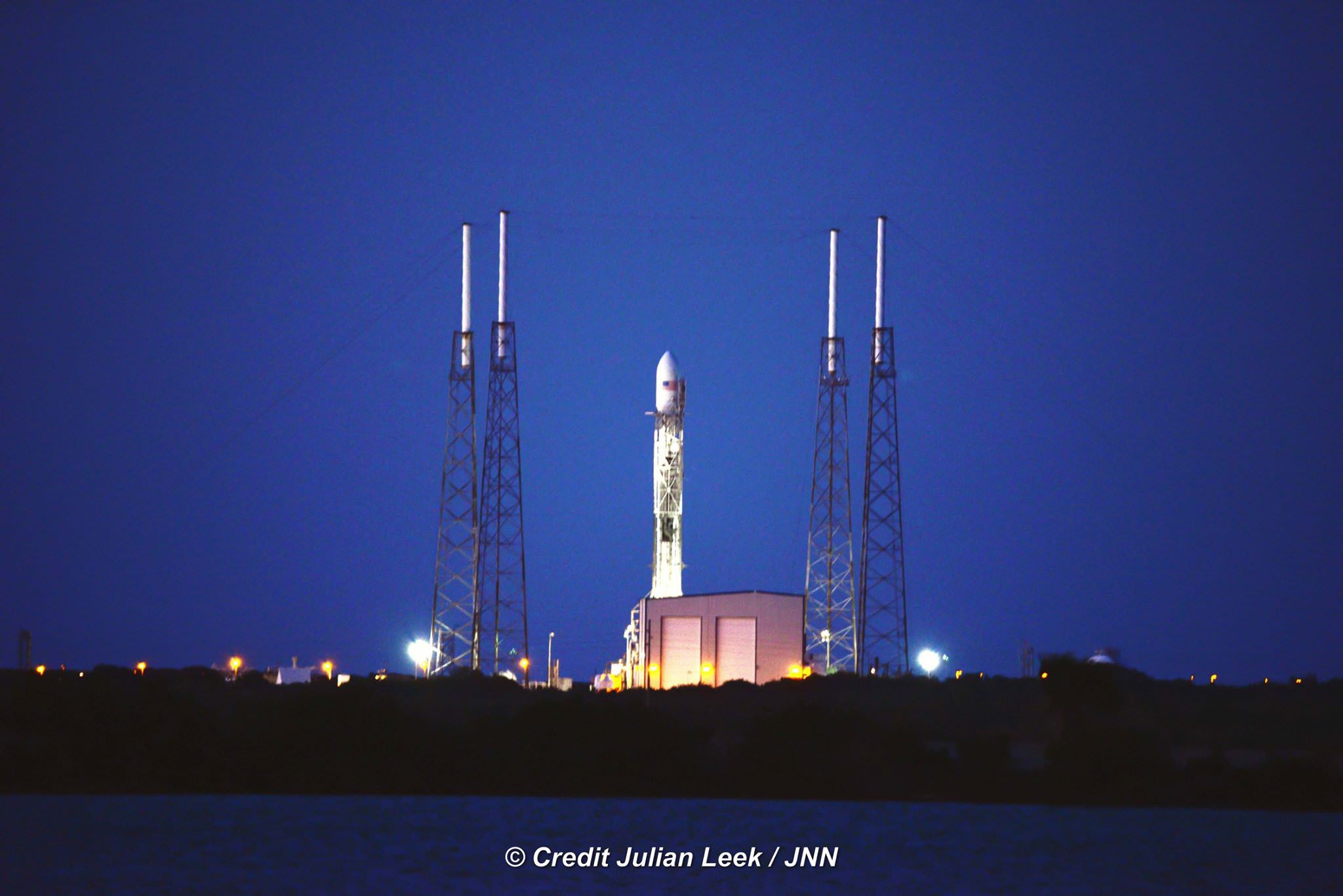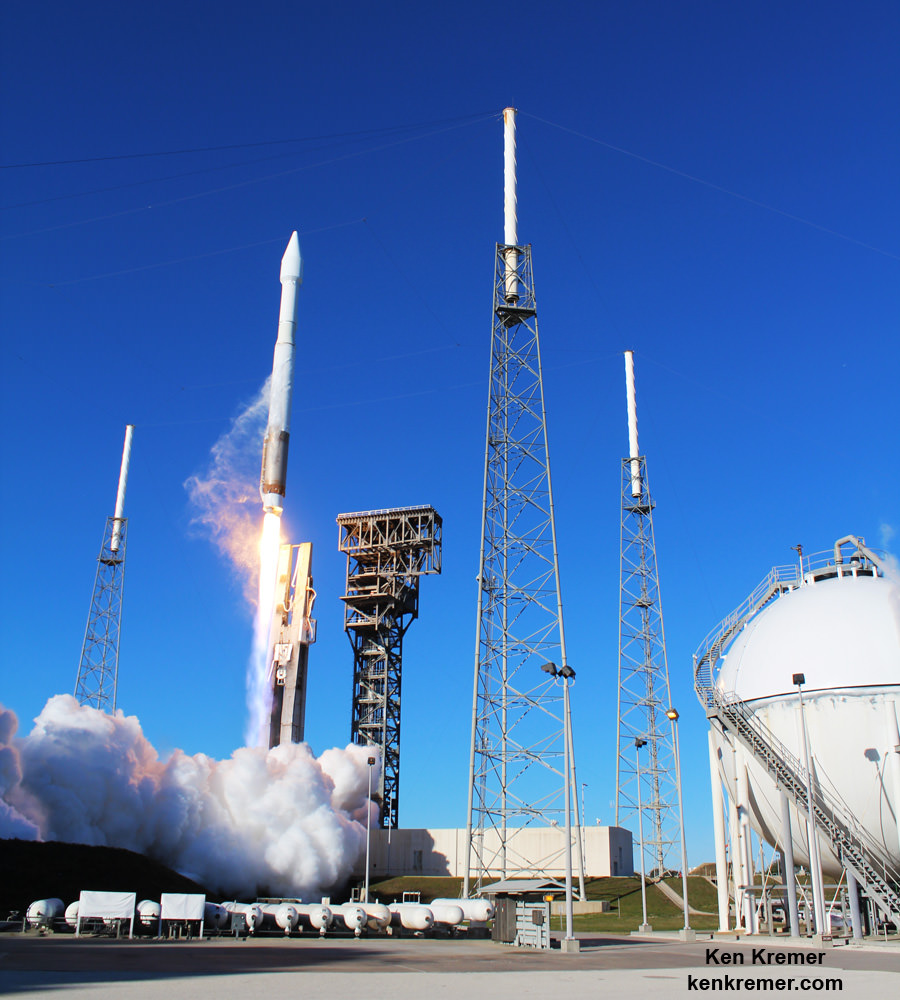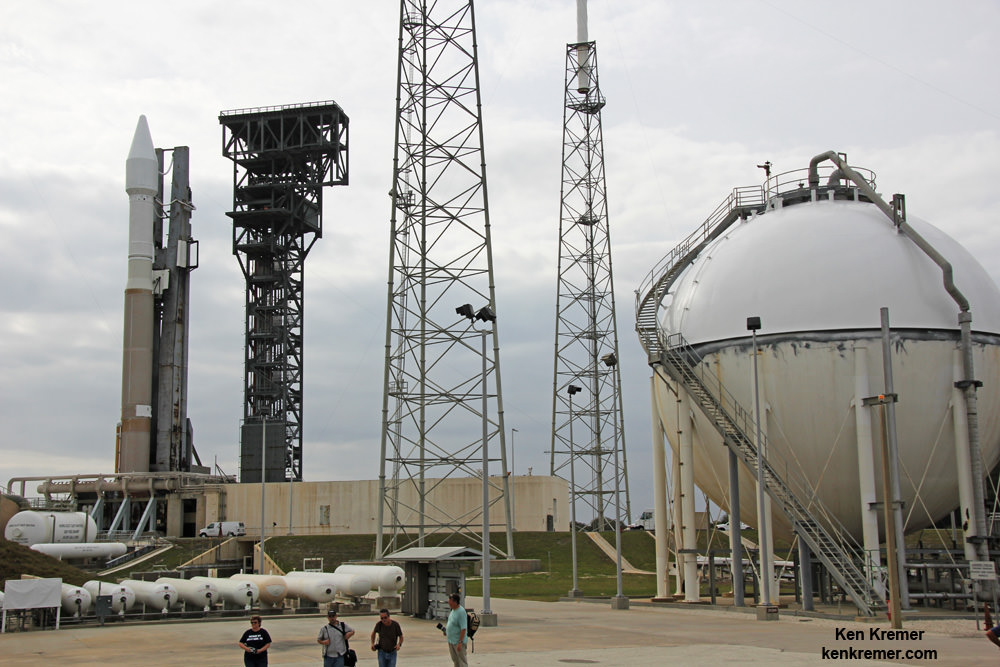
KENNEDY SPACE CENTER, FL – This week’s Atlas V rocket launch of a Cygnus cargo ship to the International Space Station (ISS) apparently experienced a first stage engine anomaly during the climb to space that required a longer firing of the boosters upper stage engine so the payload could successfully achieve the required orbit.
The stunningly beautiful nighttime blastoff of the United Launch Alliance (ULA) Atlas V from the Florida space coast on Tuesday, March 22, was not quite as flawless as initially thought and marred by the early engine shutdown which has now forced a postponement of the next planned Atlas V launch as company engineers painstakingly evaluate the data.
“The Centaur [upper stage] burned for longer than planned,” Lyn Chassagne, spokesperson for rocket maker ULA, told Universe Today.
“The ULA engineering team is reviewing the data to determine the root cause of the occurrence.”
The Centaur RL10C-1 powerplant had to make up for a thrust and velocity deficiency resulting from a 6 second shorter than planned firing of the Atlas V’s first stage RD-180 engines.
Indeed the Centaur had to fire for a minute longer than planned to inject Cygnus into its target orbit.
“The first stage cut-off occurred approximately 6 seconds early, however the Centaur was able to burn an additional approximately 60 seconds longer and achieve mission success, delivering Cygnus to its required orbit.”
“The team is evaluating the occurrence as part of the standard post-flight data analysis. Following successful spacecraft separation, Centaur performed a disposal burn,” Chessagne elaborated.
The two stage ULA Atlas V lifted off on time at 11:05 p.m. EDT on Tuesday, March 22, 2016 from Space Launch Complex 41 on Cape Canaveral Air Force Station, Fl, under a picturesque moonlit sky carrying an Orbital ATK Cygnus spacecraft on a resupply mission for NASA to the ISS.
Following a 21-minute ascent, the S.S. Rick Husband Cygnus spacecraft was successfully deployed into its intended orbit approximately 144 miles above the Earth, inclined at 51.6 degrees to the equator, Orbital ATK confirmed in a statement.
The Russian-made RD AMROSS RD-180 engines power the Atlas V first stage and the dual nozzle powerplants have been completely reliable in 62 Atlas launches to date.
The RD-180s were supposed to fire for 255.5 seconds, or just over 4 minutes. But instead they shut down prematurely resulting in decreased velocity that had to be supplemented by the Centaur RL10C-1 to get to the intended orbit need to reach the orbiting outpost.
The liquid oxygen/liquid hydrogen fueled Aerojet Rocketdyne RL10C-1 engine was planned to fire for 818 seconds or about 13.6 minutes. The single engine produces 22,900 lbf of thrust.
The cause of the first stage engine shortfall has not been announced. ULA has launched a thorough investigation to determine root cause as to whether for example it’s the RD-180 engine itself, a faulty sensor, fuel related, ground support equipment or a myriad of some other rocket components or issues.

Although the Atlas V did successfully launch and deploy the commercial Cygnus CRS-6/OA-6 spacecraft into the required orbit, the Centaur was pressed into extra duty in real time to propel the payload.
The Atlas V first and second stages are preprogrammed to swiftly react to a wide range of anomalous situations to account for the unexpected. The rocket and launch teams conduct countless simulations to react to off nominal situations.
“The Atlas V’s robust system design, software and vehicle margins enabled the successful outcome for this mission,” Chassagne said.
“As with all launches, we will continue to focus on mission success and work to meet our customer’s needs.”
At the post launch media briefing, ULA program manager for NASA missions Vern Thorp, said that “ in a little over 20 minutes we went from liftoff to delivering Cygnus into exactly the orbit that it wanted to be in. This was our second successful cargo mission [for Orbital ATK] since December.”
“We were targeting a 230 kilometer circular orbit and we came very close to that as we normally do, just a fraction of a kilometer off. Well within the normal dispersions.”
“We nailed it. We got Cygnus where it wants to go.”
Asked about the Centaur he said that the prelaunch predictions are based on preliminary trajectories and can vary depending on the actual conditions at launch.
“What I do know is that Centaur nailed the orbit. Like every mission, we’re going to do a very, very detailed post-flight review. We always do and we always have done that. That’s to make sure that everything performed properly. From everything we’ve seen so far, the mission was pretty nominal.”
Now as a result of the post-flight review into the engine anomaly and velocity shortfall, the next launch of the “Atlas V carrying the MUOS-5 mission for the U.S. Navy and the U.S. Air Force has been delayed to no earlier than May 12,” Chassagne added.
ULA needs to “further review the data anomaly experienced during the OA-6 mission.”
“The delay will allow additional time to review the data and to confirm readiness for the MUOS-5 mission.”
The Atlas V/MUOS-5 mission will lift off from the same pad at Space Launch Complex 41 on Cape Canaveral Air Force Station, Fl, whenever a launch target date is announced by ULA.
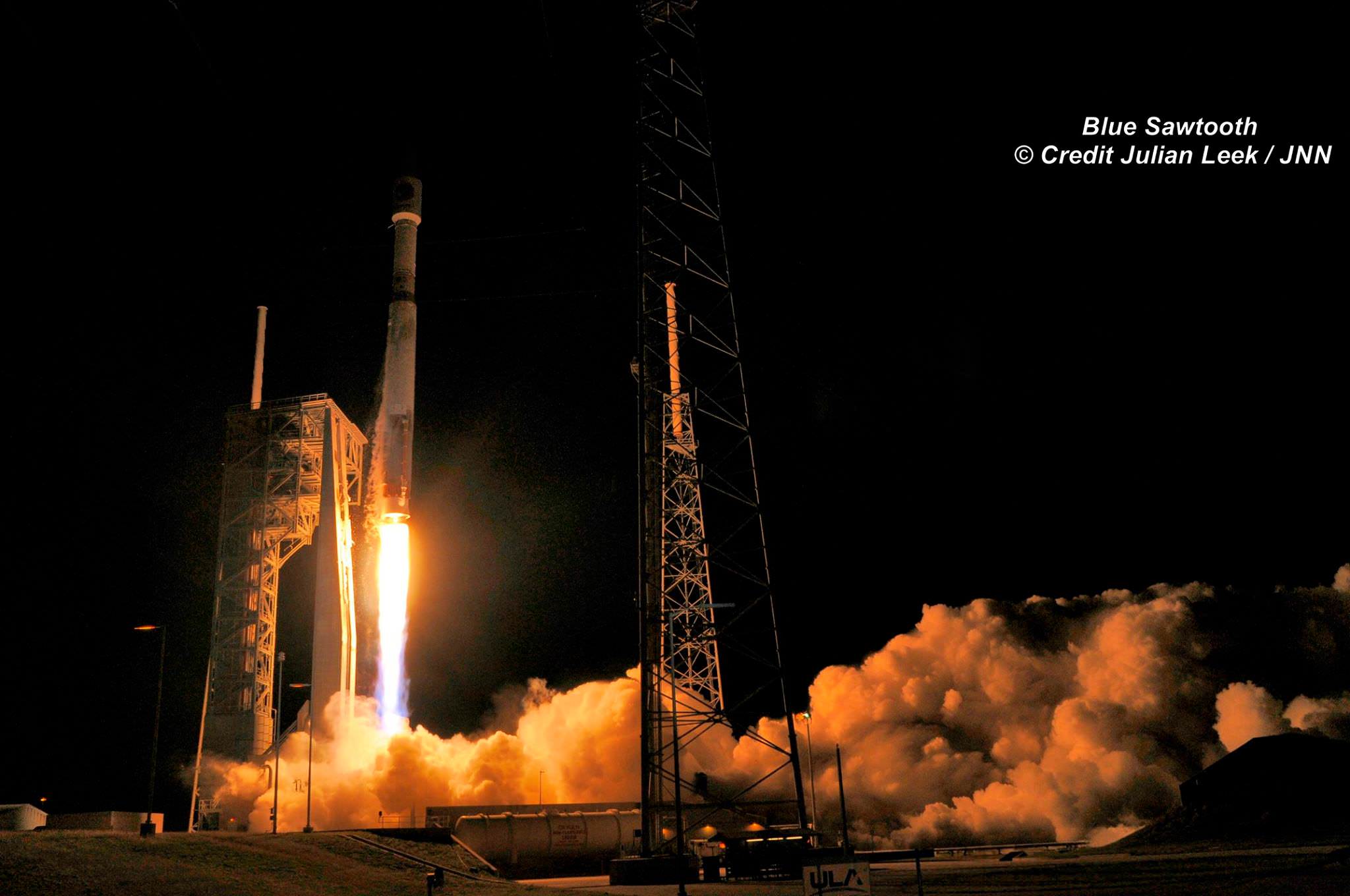
Meanwhile the Cygnus CRS-6/OA-6 spacecraft continues chasing down the ISS for a planned arrival early Saturday morning, March 26.
The spacecraft will arrive at the station on Saturday, March 26. At that time Expedition 47 Commander Tim Kopra of NASA and Flight Engineer Tim Peake of ESA (European Space Agency) will grapple Cygnus, using the space station’s robotic arm, at approximately 6:40 a.m.
NASA TV coverage of rendezvous and grapple will begin at 5:30 a.m.
The Cygnus CRS-6/OA-6 payload of more than 16,000 pounds (7200 kg) weighed in as the heaviest payload to launch on an Atlas V to date.

The Cygnus has been named the S.S. Rick Husband in honor of Col. Rick Husband, the late commander of Space Shuttle Columbia, which was tragically lost with its crew of seven NASA astronauts during re-entry on its final flight on Feb. 1, 2003.
Watch for Ken’s ongoing Cygnus launch reports.
Stay tuned here for Ken’s continuing Earth and planetary science and human spaceflight news.


